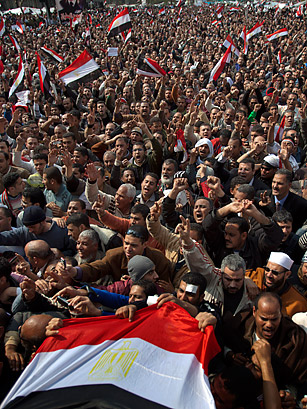
For days, Tahrir — or Liberation — Square has dominated headlines as the center stage for a budding Egyptian revolution, with scenes of chaos and courage beamed from there across the world. But in the late 19th century the area was dubbed "Paris Along the Nile" for its European architecture; the square itself is surrounded by some of the most important buildings in Cairo, including the national museum, the headquarters of the ruling party and the state-TV building. In 1952, it saw the stirrings of a military-led revolt that ousted the ruling monarchy and paved the way for the charismatic, autocratic Gamal Abdel Nasser to take power a few years later. In March 2003, an estimated 30,000 Egyptians protested the Iraq war there. But nothing compares to the hundreds of thousands that have recently flooded Tahrir Square calling for democratic reform and the resignation of President Hosni Mubarak.